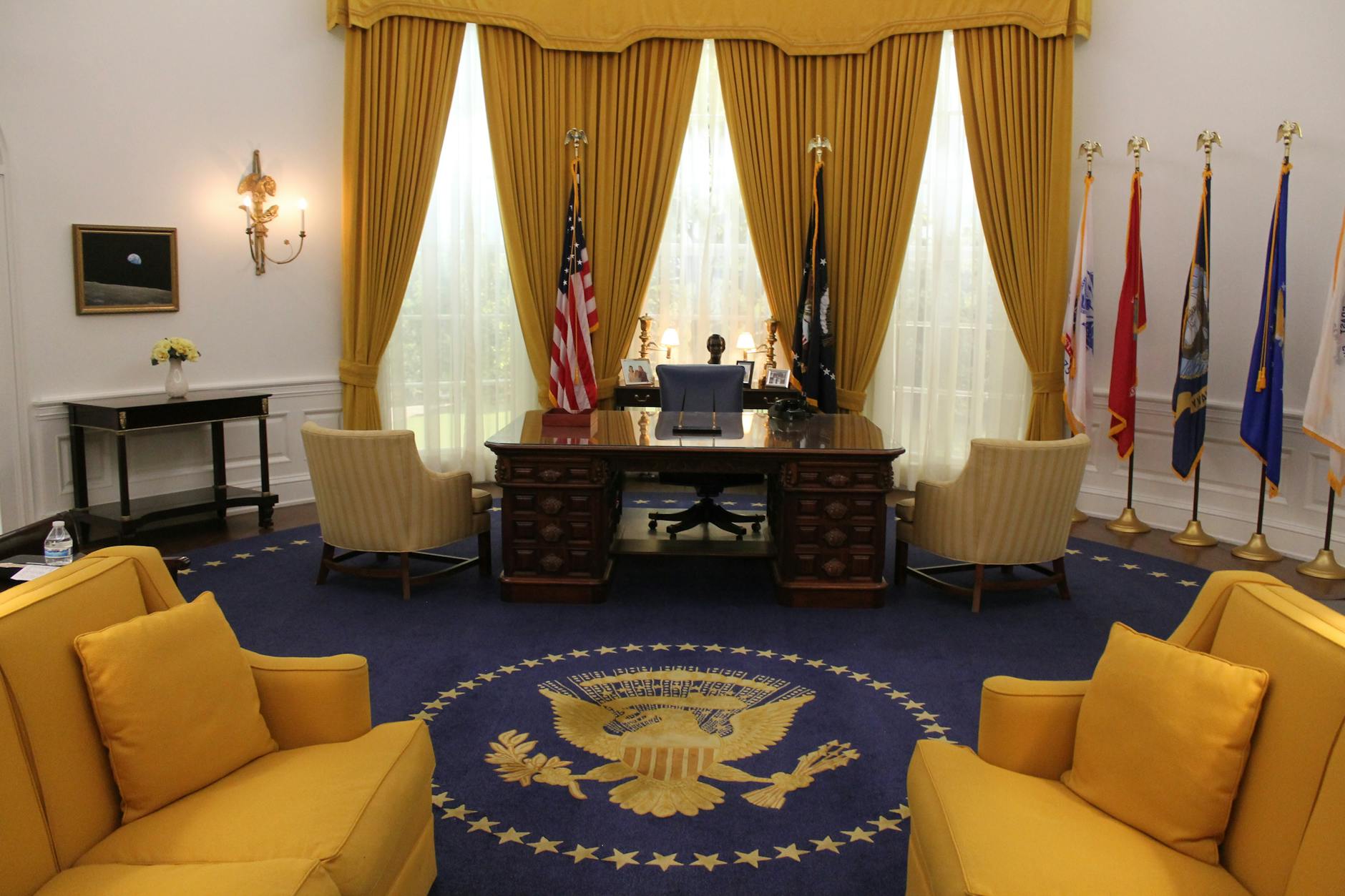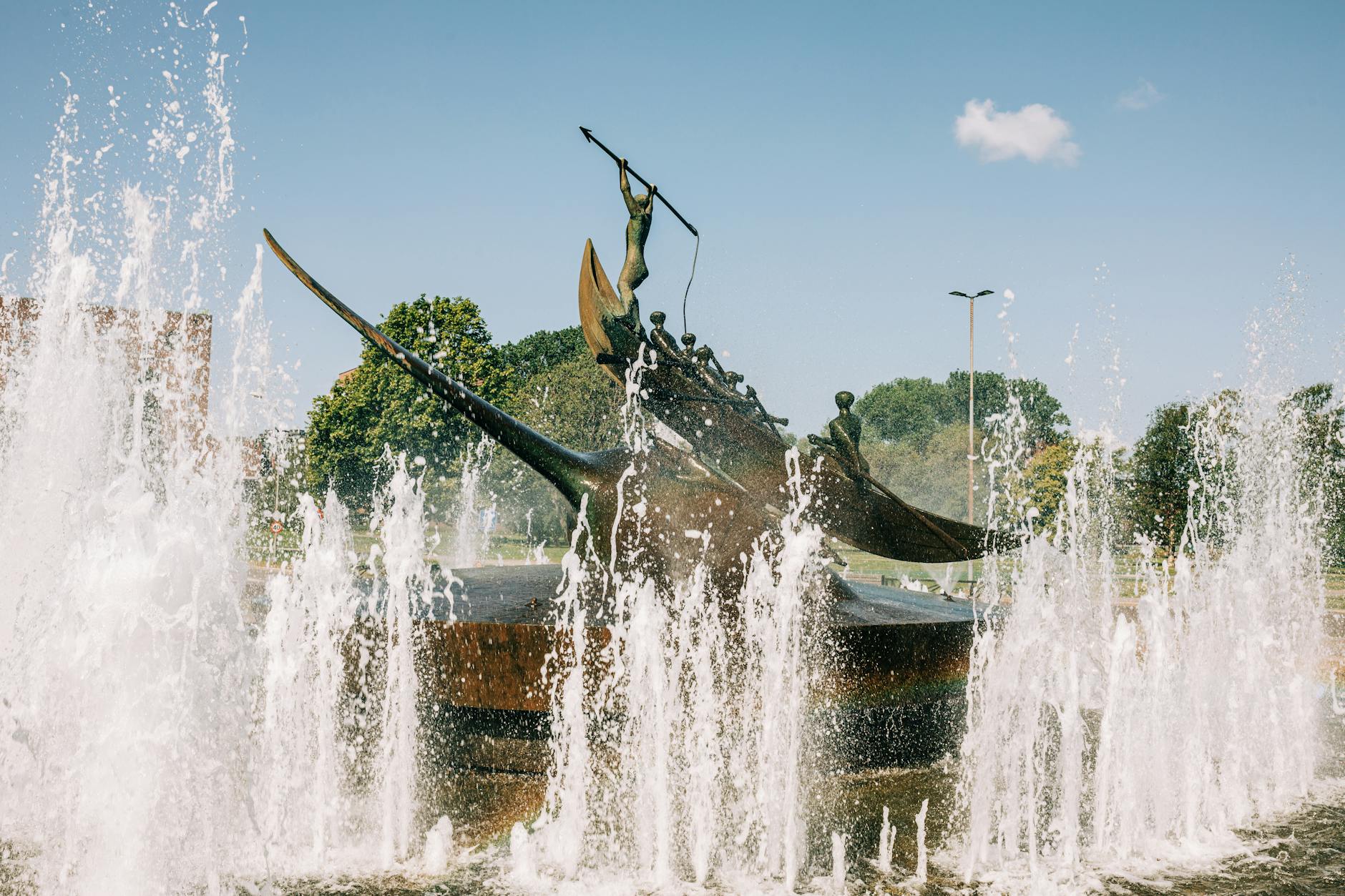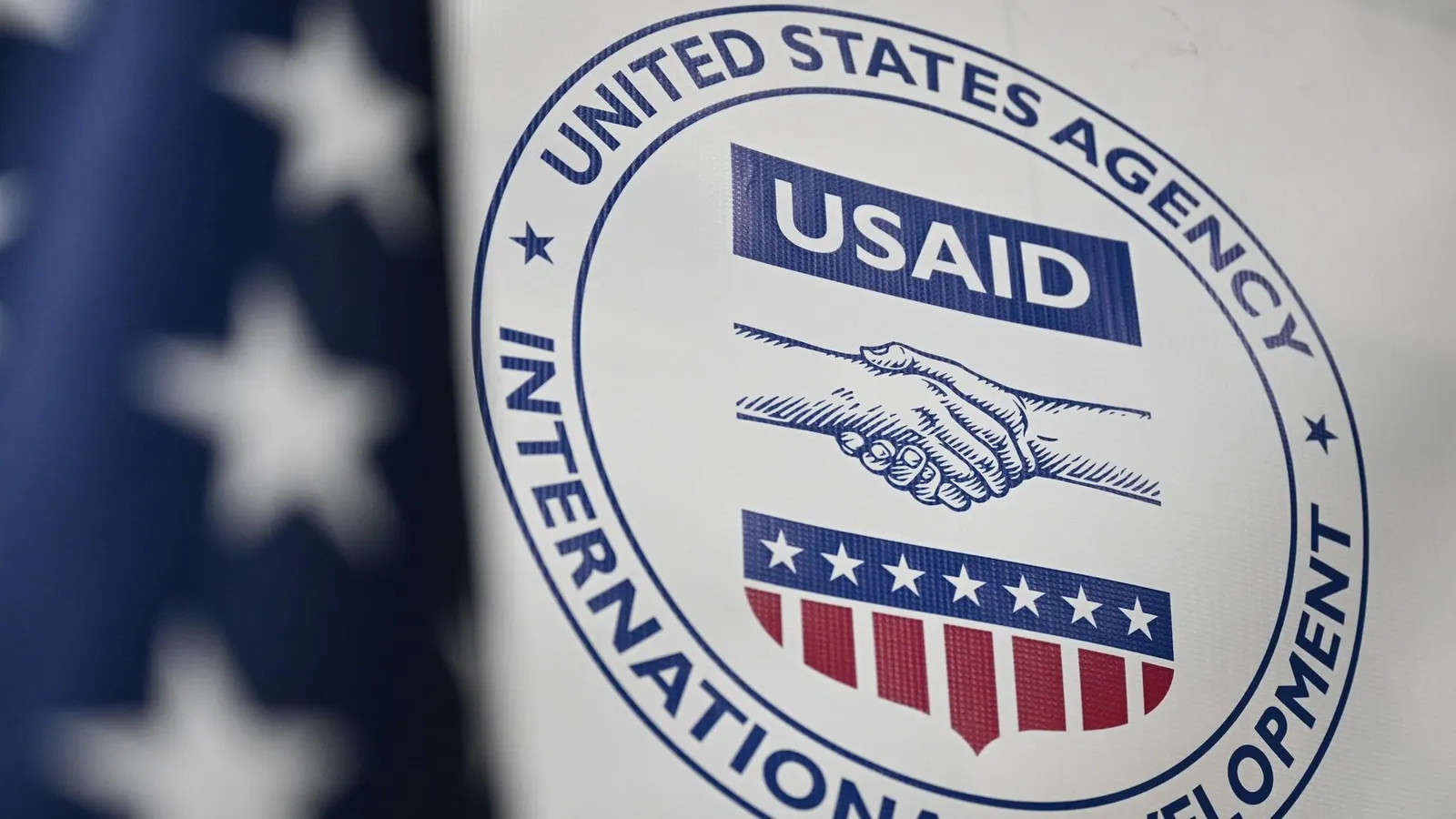Table of Contents
Introduction
The Oval Office is more than just a room—it’s a symbol of power, a stage for history, and a canvas of secrets. Nestled within the West Wing of the White House, this elliptical chamber has witnessed the triumphs, tragedies, and turning points of the United States for over a century. While its image graces newsreels and textbooks, the Oval Office harbors untold stories, surprising revelations, and intricate details that remain largely unknown to the public. In this deep dive, we’ll peel back the layers of this legendary space, uncovering truths that go beyond the polished furniture and presidential portraits.
The Birth of the Oval Office: A Shape with a Story
The Oval Office wasn’t always the presidential nerve center we know today. Its origins trace back to 1909, during President William Howard Taft’s administration. Taft, a man of considerable stature—both physically and politically—wanted a workspace that reflected grandeur and functionality. The room’s distinctive oval shape wasn’t a random architectural whim; it drew inspiration from the Blue Room in the White House’s main residence, an oval-shaped space designed by James Hoban in 1792 to evoke elegance and symmetry. But the Oval Office as we recognize it didn’t take root until Franklin D. Roosevelt moved it to its current West Wing location in 1934, cementing its status as the president’s primary domain.
Here’s a revelation: the Oval Office wasn’t even oval in its earliest incarnation. Taft’s original version, located in the center of the West Wing, was a rectangular room with curved ends—more of a softened box than a true ellipse. It wasn’t until the 1930s redesign that the Oval Office embraced its now-iconic curvature, a shift driven by practicality as much as aesthetics. FDR needed a space closer to his staff, and the new design allowed for better flow and privacy. This relocation also hid a subtle truth: the Oval Office sits atop what was once a laundry room, a humble foundation for such a lofty stage.
The Desk: A Relic of Resilience
No exploration of the Oval Office is complete without mentioning the Resolute Desk, a towering symbol of presidential authority. Crafted from the timbers of the HMS Resolute, a British ship abandoned in Arctic ice and later salvaged by Americans, the desk was a gift from Queen Victoria to President Rutherford B. Hayes in 1880. Its journey to the Oval Office, however, wasn’t immediate. It languished in storage and lesser White House rooms until Jacqueline Kennedy rediscovered it in 1961, insisting it grace the Oval Office for her husband, John F. Kennedy.
Here’s an unknown truth: the Resolute Desk has a hidden panel. During renovations in the 1940s, a small door was added to the knee-hole, originally to conceal FDR’s leg braces as he battled polio. This modification turned the desk into a shield of dignity, a quiet testament to resilience—both of the president and the nation. Since then, nearly every president has used it, from JFK’s children playing beneath it to Barack Obama’s casual footrest moments. The desk’s scars and secrets make it the Oval Office’s beating heart.
The Walls That Whisper History
The Oval Office walls are a gallery of power, adorned with art and artifacts chosen by each president. Yet their stories often go untold. Take the bust of Abraham Lincoln, a fixture in many administrations. It’s not just a tribute—it’s a survivor. The original was damaged in a 1871 White House fire, and its replacement carries the weight of that near-loss. Or consider the portrait of George Washington, a constant since the room’s inception. Its presence isn’t just tradition; it’s a deliberate nod to continuity, a reminder that the Oval Office is a bridge between past and present.
A lesser-known revelation: the walls themselves have changed. During the Truman reconstruction of 1945-1952, the entire White House—including the Oval Office—was gutted and rebuilt due to structural decay. The Oval Office we see today is a facsimile of its former self, its wood paneling and plaster a modern recreation. Yet, beneath the surface, remnants of the original framework linger, a hidden truth tying today’s leaders to their predecessors.
The Rug: A Canvas of Controversy
The Oval Office rug is a quiet star, often overlooked but rich with meaning. Each president commissions a new one, imprinting their legacy into the room’s fabric. Bill Clinton’s rug, with its bold red and blue design, sparked debate for its departure from tradition. George W. Bush’s “Optimism Rug,” with its radiating sunburst, reflected his post-9/11 resolve. Barack Obama’s rug famously included quotes from Martin Luther King Jr. and Abraham Lincoln—until a 2010 controversy erupted when one quote, attributed to Lincoln, was actually from a 19th-century abolitionist, Theodore Parker. The Oval Office rug, it turns out, is a battleground of symbolism and scrutiny.
An unknown detail: the rug’s creation is a logistical feat. Woven by hand, often in small American towns, it can take months to complete. Richard Nixon’s rug, for instance, was crafted in South Carolina and featured a custom seal with 50 stars—one of the first to reflect Alaska and Hawaii’s statehood. The Oval Office rug isn’t just decor; it’s a map of the president’s mind.
The Windows: Eyes to the World
The Oval Office boasts three large south-facing windows, flooding the room with light and offering a view of the Rose Garden. But their design hides a truth: they’re bulletproof. Installed during the 20th century as security threats grew, these panes are thick enough to stop gunfire, a silent shield for the commander-in-chief. Lyndon B. Johnson once quipped that the windows made him feel “caged,” a rare admission of the Oval Office’s dual nature—sanctuary and fortress.
A revelation: the windows inspired a secret escape route. During World War II, FDR oversaw the construction of an underground bunker, now known as the Presidential Emergency Operations Center (PEOC). Access was discreetly linked to the Oval Office, ensuring the president could flee in crisis. Though rarely used—most famously on 9/11 by Dick Cheney—the tunnel’s existence underscores the room’s role as a wartime helm.
The Fireplace: Warmth and Whimsy
Opposite the Resolute Desk sits the Oval Office fireplace, a marble relic from the Taft era. It’s more than a cozy touch; it’s a canvas of personality. Harry Truman kept it bare, a stark contrast to Dwight Eisenhower, who adorned its mantel with golf trophies. Ronald Reagan added a twist, placing a jar of jellybeans atop it—a nod to his quirky charm. The fireplace’s mantle also holds a hidden detail: a small dent from when George H.W. Bush, in a rare moment of levity, tossed a horseshoe that missed its mark during an indoor game.
An untold truth: the fireplace once saved a presidency. During the Cuban Missile Crisis, JFK held tense meetings in the Oval Office, often pacing before the hearth. Advisors later recalled its warmth steadying the room’s mood as the world teetered on nuclear brinkmanship. The Oval Office fireplace, it seems, is a quiet witness to survival.
The Ceiling: A Forgotten Masterpiece
Look up in the Oval Office, and you’ll see a ceiling adorned with a plaster medallion—a subtle nod to classical design. Installed during the 1934 redesign, it features an eagle clutching arrows and olive branches, echoing the Great Seal. Yet its craftsmanship hides a revelation: it’s a Depression-era artifact. Built by skilled workers under the New Deal, the ceiling is a testament to FDR’s vision of renewal, both for the nation and its presidential seat. Few notice it, but the Oval Office ceiling crowns the room with purpose.
The Unknown Visitors
The Oval Office has hosted dignitaries, activists, and celebrities, but its guest list includes stranger entries. In 1969, Elvis Presley famously barged in to meet Nixon, gifting him a chrome-plated pistol (promptly confiscated). In 1985, a young Michael Jackson sat across from Reagan, discussing youth initiatives amid surreal fanfare. Even animals have crossed the threshold—Calvin Coolidge once received a raccoon named Rebecca, briefly a Oval Office resident before moving to the White House zoo. These quirky encounters reveal the room’s lighter side, a stage for the unexpected.
The Tech Beneath the Tradition
Beneath the Oval Office’s timeless veneer lies cutting-edge technology. Hidden microphones, once installed during Nixon’s tenure (and infamously exposed in Watergate), have evolved into secure communication lines. A trapdoor beneath the rug—rumored but unconfirmed—may conceal wiring for phones and screens. The Oval Office blends antiquity with modernity, a truth that keeps it functional in a digital age.
The Ghosts of Decisions Past
The Oval Office is steeped in decisions that shaped the world—some celebrated, others shrouded in regret. It was here that Truman authorized the atomic bomb, that Kennedy navigated the Bay of Pigs, that Bush launched the Iraq War. Lesser-known moments linger too: Gerald Ford’s pardon of Nixon, signed at the Resolute Desk, divided a nation still healing from scandal. The Oval Office isn’t just a room; it’s a crucible where history is forged, its air thick with the weight of choices.
A Living Legacy
Today, on March 1, 2025, the Oval Office remains a dynamic space. President after president redecorates it—new curtains, fresh paint, a shuffled lineup of busts—yet its essence endures. Its oval shape, a departure from rigid corners, mirrors the flexibility required of leadership. Its artifacts—from the desk to the rug—tell stories of grit and grace. And its secrets, from hidden panels to wartime tunnels, remind us that the Oval Office is more than meets the eye.
For all its fame, the Oval Office guards its mysteries well. It’s a room of revelations, where the past whispers to the present, and the unknown truths wait patiently to be uncovered. Next time you see it flicker across your screen, remember: behind the polished facade lies a tapestry of history, humanity, and hidden wonders.






One thought on “Unveiling the Oval Office: Unknown Truths, Revelations, and Hidden Details”
Comments are closed.